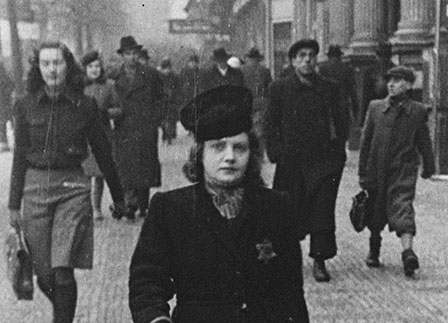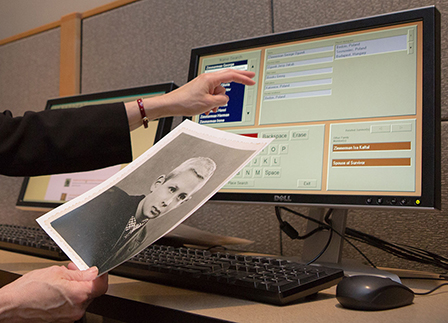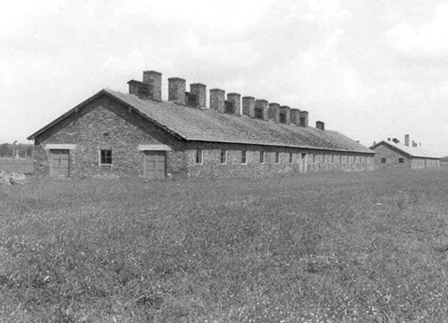Overview
- Caption
- A man on the street plays the violin in the hope of receiving food or money.
Joest's original caption reads: "This man played the same sound on his violin again and again. His eyes followed me, but whether out of fear or because he hoped to receive a coin I do not know." - Photographer
- Heinrich Joest
- Date
-
1941 September 19
- Locale
- Warsaw, Poland
- Variant Locale
- Warszawa
Varshava
Warschau - Photo Credit
- United States Holocaust Memorial Museum, courtesy of Guenther Schwarberg
Rights & Restrictions
- Photo Source
-
United States Holocaust Memorial Museum
Copyright: United States Holocaust Memorial MuseumProvenance: Guenther SchwarbergSource Record ID: Collections: 2004.1.10Second Record ID: Collections: 2004.1.1 - Published Source
- Das Getto: Geburtstagsspaziergang in die Hoelle - Schwarberg, Guenther - Steidl Verlag: Goettingen - p. 79
Keywords & Subjects
Administrative Notes
- Biography
- Heinrich Joest, German army sergeant during World War II who photographed the Warsaw ghetto. Jost was in his early forties, the owner of a hotel in Langenlonsheim, when he was called to serve in the German army during World War II. On September 19,1941, his birthday, Joest was stationed in Warsaw. On that day he decided to take his Rolleiflex camera into the ghetto because he wanted "to see what went on behind the ghetto walls." Once inside, Joest shot 140 images of every aspect of ghetto life and death. He kept the images to himself until 1982 when he met Guenther Schwarberg, a reporter for "Der Stern" magazine, who interviewed him and facilitated the publication of some of his images in 1988.
- Record last modified:
- 2004-12-30 00:00:00
- This page:
- https://collections.ushmm.org/search/catalog/pa2748



